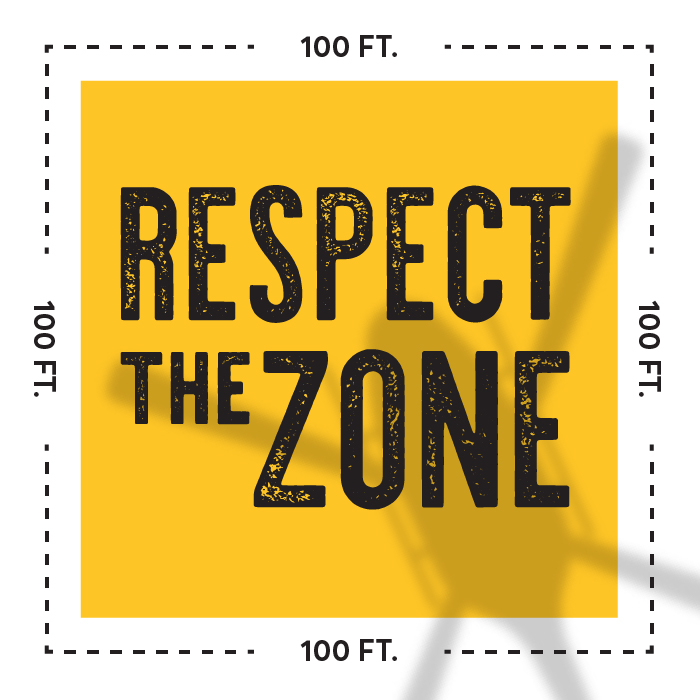THERE ARE HUNDREDS OF
REASONS TO STAY CLEAR
The general public and even some emergency personnel aren’t always aware of the dangers around air ambulance aircrafts.
Mark off 100 square feet landing zone with cones and/or lights
Watch out for wires and drones
Never walk behind a helicopter
Block anyone trying to cross through landing zone
Block anyone trying to cross through landing zone
FAQ’s
What is a landing zone?
A landing zone is an area where an emergency aircraft can land.
Why is it important?
The thought of calling for air medical assistance is already a stressful situation. The safe arrival and departure of that aircraft is paramount to be able to provide the assistance requested.
How should landing zones be selected? What are the requirements for landing zones?
Landing zones should be flat, 100 feet by 100 feet surfaces that are clear of overhead obstructions and stationary obstructions, like towers, wires and poles. Additionally, they should have restricted access, either permanent (fence or gate) or set up by local security and EMS.
What are the best surfaces for a landing zone?
Pavement is the best, followed by grass. Unprepared or unimproved dirt is the worst because it can result in brownout, where the dust eliminates all visibility.
Why should you walk the landing zone before allowing a helicopter to land?
You should walk the landing zone to check ground conditions for anything that could puncture or impact the aircraft.
What are potential obstructions and hazards to look out for?
-
Trees and Poles
-
Bushes and Stumps
-
Rocks and Logs
-
Buildings
-
Towers and Cables
-
Fence Posts
-
Road Signs
-
Loose Debris
-
Blowing Dirt or Sand
-
People and Animals
-
Vehicles
Where are landing zones typically located? Where should they be?
The landing zone should be as close to the accident scene as possible, without jeopardizing the safety of anyone involved. The landing zone should allow the aircraft to land and take off with a clear line of sight.
How should landing zones be marked?
Landing zones should be marked with traffic cones, lights or strobes, particularly in all corners. Flashing lights are to be avoided because they may distract the pilot or other personnel involved. It’s important to note that if traffics cones are used, you might want to have something to weight them down with.
Important tips if cars are in the surrounding area:
-
All vehicle lights should be turned off during loading/unloading and landing/takeoff, as the bright white lights can be a distraction for the pilot and his crew.
-
All doors should be closed as the rotor wash is certainly capable of ripping doors off.
What are some things to know about an aircraft’s rotor system and its hazards?
Some rotor systems are extremely low. It’s crucial to stay alert.
-
It is important to never approach them without guidance from the flight crew and to never approach them from the front.
-
The Tail Rotor can be nearly invisible when spinning.
What should I know about aircraft landing and departure?
-
Typically, air ambulances take off and land in the direction of the wind. The reason for this is because it is safest.
-
Ensure everyone is clear prior to the helicopter’s landing and departure. When directed, always approach the aircraft in full view of the pilot and in a crouched position.
